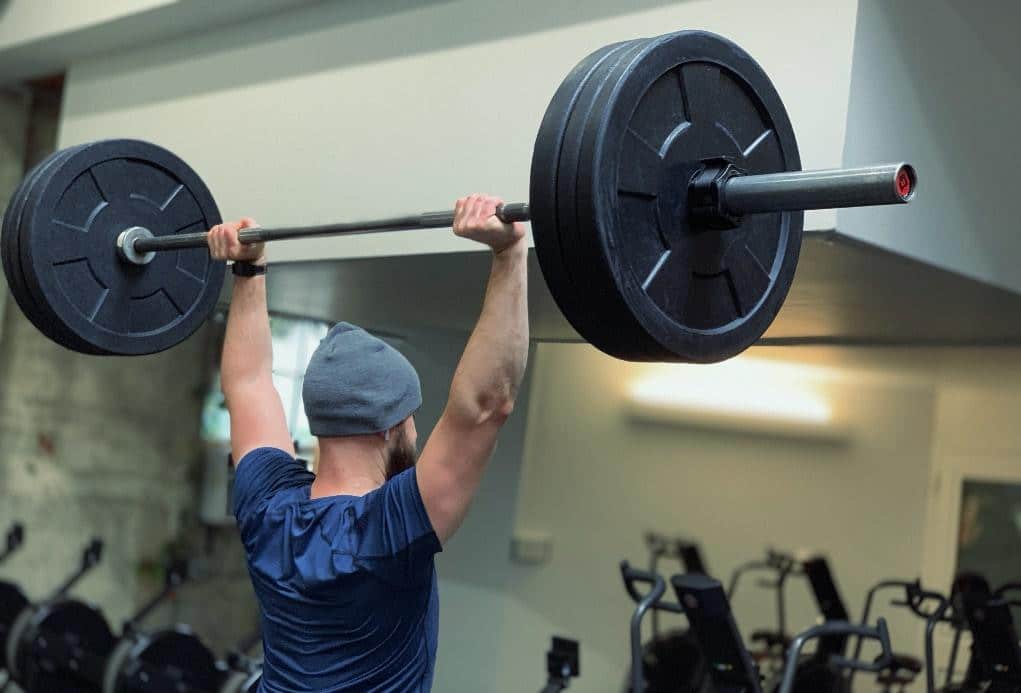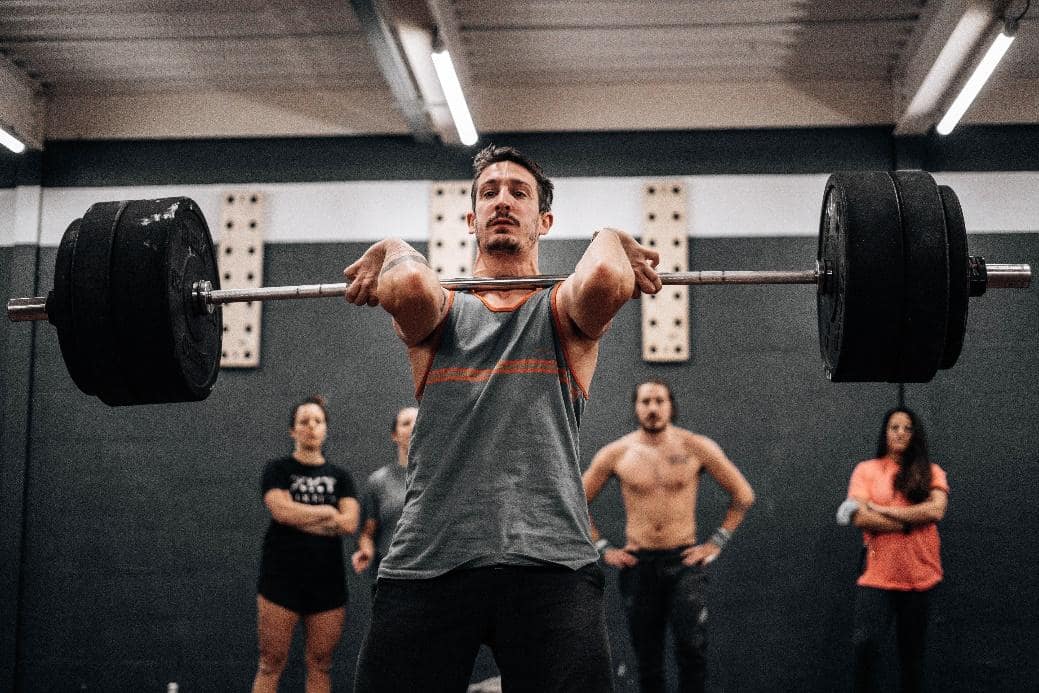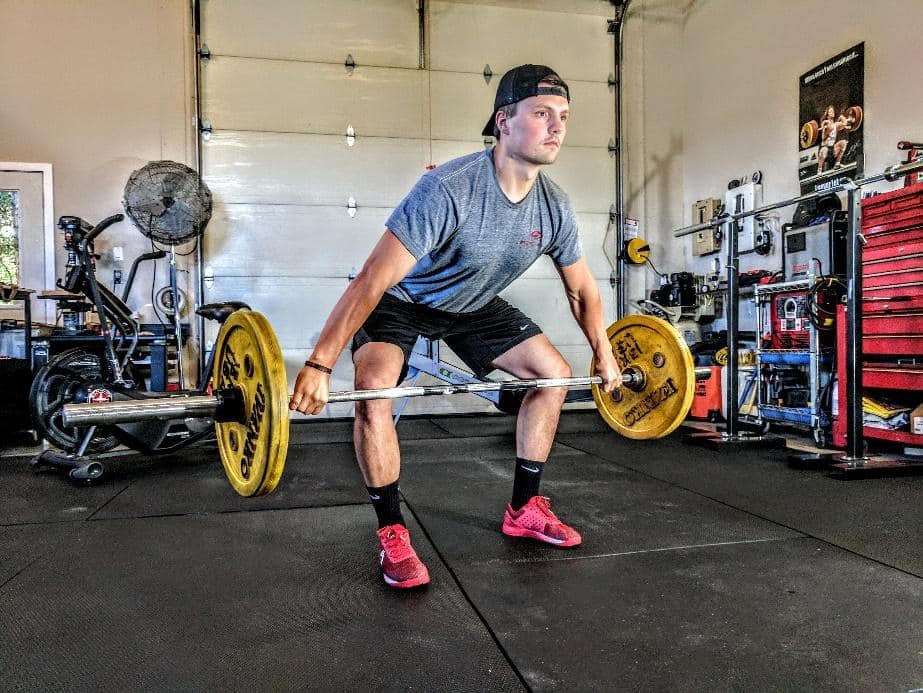3 de November de 2023
Undulating Load for Strength Gain: How Does It Work?
What Does Undulating Load Involve for Gaining Strength?

The systematic variation of training stimuli, known as periodization, is effective in optimizing responses to power training (“American College of Sports Medicine Position Stand,” 2009). For this reason, there has been considerable interest in comparing different periodization strategies to assess their relative effectiveness. For example, in a relatively recent systematic review, Harries and colleagues (Harries et al., 2015) found 17 studies comparing linear periodization programs with undulating ones that met their inclusion criteria.
Linear periodization involves progressively increasing intensity while decreasing volume, whereas undulating periodization varies volume and intensity much more frequently, even within the same session. In this Vitruve article, we explain in detail each of them and why undulating periodization is interesting for gaining power and muscle mass.
Undulating load for power gain is an advanced training technique that involves modifying the load and training volume within a single workout. The sets can be increasing or decreasing following a pattern similar to a wave going back and forth (Wood et al., 2016). Undulating load for power gain can be used in athletes and experienced lifters at different times during the season, considering that this type of training can be very demanding.
The goal of using undulating load for power gain is to train the neuromuscular system to improve motor unit recruitment, discharge frequency, and all factors on which force production depends (Cormie et al., 2011a, 2011b). If you’re an athlete or a strength coach preparing athletes for a weightlifting-related competition, you can benefit from this advanced technique.
How Does Undulating Load Work for Gaining Power?

This training technique is one of many that coaches use in our quest to optimize neuromuscular responses and improve muscular strength. Undulating load for strength gain follows a systematic scheme that modifies the lifted weight in a wave-like fashion to take advantage of post-tetanic potentiation (PTP). PTP is a neural process in which we can apply greater force production in successive contractions as we increase the load, thanks to the neural excitation achieved with those repetitions and previous waves (Alves et al., 2021; Rijkelijkhuizen et al., 2005).
First and foremost, we will perform a thorough warm-up to prevent injuries and fine-tune our neural connections. The initial sets of the session will be done traditionally with a gradual load increase, as follows:
Example of warm-up sets:
- 1×3 at 60% 1RM
- 1×2 at 70% 1RM
- 1×2 at 80% 1RM
After the warm-up and warm-up sets, we will start with a specific load, which can be higher or lower according to preferences, although we will see later that a light initial load may be more interesting. What we must consider is that high intensities, generally above 80% – 85%, achieve that neural excitation or PTP (Abbate et al., 2000). Once the initial load is selected, we perform waves of three sets like the following example, until the athlete cannot complete the marked repetition.
First wave:
- 2 repetitions at 80% of 1RM
- 1 repetition at 85% of 1RM
- 1 repetition at 90% of 1RM
Second wave:
- 2 repetitions at 82.5% of 1RM
- 1 repetition at 87.5% of 1RM
- 1 repetition at 92.5% of 1RM
In this example, we see a descending undulating load for strength gain in which we have made two waves, increasing the weight in the second and subsequent ones, if any. Each wave prepares our neuromuscular system to lift more weight in the next one through PTP – that’s the magic of undulating loads for strength gain. Within the waves, we only rest the time it takes to change the weight and prepare to lift the load. Between loads, the rest should be ample, with a minimum of three minutes, which can be extended based on the athlete’s needs to start the next wave with minimal fatigue.
Practical Example of Undulating Load for Strength Gain

There are as many wave designs as there are coaches, as you can choose higher or lower loads, as well as sequences of repetitions of all kinds. We can find examples of undulating load for maximum strength gain and others focused on increasing muscle size. The difference between them lies in the loads used and, therefore, the repetitions performed with them. This example would serve us to focus on maximum strength gain (remember that warm-up and approximation sets come first):
Week 1: first wave
- 3 repetitions at 80% of 1RM
- 2 repetitions at 82.5% of 1RM
- 1 repetition at 85% of 1RM
Week 1: second wave
- 3 repetitions at 82.5% of 1RM
- 2 repetitions at 85% of 1RM
- 1 repetition at 87.5% of 1RM
Week 1: third wave
- 3 repetitions at 85% of 1RM
- 2 repetitions at 87.5% of 1RM
- 1 repetition at 90% of 1RM
Week 2: first wave
- 3 repetitions at 82.5% of 1RM
- 2 repetitions at 85% of 1RM
- 1 repetition at 87.5% of 1RM
Week 2: second wave
- 3 repetitions at 85% of 1RM
- 2 repetitions at 87.5% of 1RM
- 1 repetition at 90% of 1RM
Week 2: third wave
- 3 repetitions at 87.5% of 1RM
- 2 repetitions at 90% of 1RM
- 1 repetition at 92.5% of 1RM
Week 3: deload
- 3 sets of 1 repetition at 80% maximum
Factors to Consider in the Undulating Load Technique for Gaining Strength

Initial Load
Many coaches opt for a relatively high initial load, coupled with the fact that athletes tend to choose a load that requires them to work quite hard (Wood et al., 2016). In these cases, unless the athlete shows dramatic increases in strength over a very short period, they will quickly reach a point where they cannot complete the scheduled session, resulting in a short training cycle. The advantage of starting with a lighter load is that the training cycle will have a longer duration (although it’s crucial that the initial stimulus is sufficient to induce training adaptations).
A common recommendation in the training literature is to start the training cycle with a very conservative load since the same results can be achieved with less effort (Wendler, 2011). By employing a progressive wave loading strategy, the athlete won’t train harder than necessary to achieve a specific improvement in strength.
Managing Fatigue: Limiting Time in the Demanding Undulating Load Technique
Undulating loading is a very effective way to achieve maximum neurological preparation and express maximum strength. That’s why it can be used a few weeks before a competition or at another point in the season, but the undulating loading technique for strength should not be used for more than two or three consecutive weeks. At the end of this period, it’s advisable to introduce a deload week to manage fatigue, prevent performance plateaus, and avoid injuries.
This “magic bullet” should be reserved for moments of peak performance in the season, such as competitions, so it’s not recommended to do it more than two or three times a year. A possible sequence involves two or three weeks of undulating loading to gain strength, taking advantage of the pre-competition peaking with a deload week, or as much time as necessary, and then competing. After that, traditional strength training sessions will be resumed.
Flexibility During Sessions
Athletes have days when they feel they have high levels of strength, but on other days, they may find that the loads they usually handle easily feel heavier. Undulating load training for strength allows for one or several waves depending on how the athlete feels. They might find that one wave is sufficient in the first set, or, on the contrary, they may feel they can push a bit harder in that session. Flexibility in training is key, so it is advisable to prescribe undulating load training for strength in an open and flexible manner.
Velocity-Based Training (VBT) as an Effective Strategy for Controlling %1RM in Undulating Load with Maximum Precision
The maximum weight we can lift (1RM) varies to a greater or lesser extent every day due to various factors such as rest, stress, nutrition, etc. This variability in 1RM makes it challenging to accurately determine the weights used in the undulating load technique to gain strength. There is a strategy that addresses this uncertainty by basing our 1RM and its percentages on the speed at which we can lift the bar.
Velocity-Based Training (VBT) prescribes loads based on the speed of each lift. The way to do this is to measure the speed of the basic exercise that we are going to perform in the waves during warm-up and approach series. This speed allows us to know what the 1RM is for that specific day, and from there, we can calculate precisely the kilos we need to use in the waves. To do this, we need a valid and reliable speed measurement device, such as Vitruve, which tells us in real-time the speed at which we performed a squat, a snatch, or any exercise. This strategy adds even more quality to the advanced technique of undulating load for strength gain.
References
Abbate, F., Sargeant, A. J., Verdijk, P. W. L., & De Haan, A. (2000). Effects of high-frequency initial pulses and posttetanic potentiation on power output of skeletal muscle. Journal of Applied Physiology (Bethesda, Md. : 1985), 88(1), 35–40. https://doi.org/10.1152/JAPPL.2000.88.1.35
Alves, R. R., Viana, R. B., Silva, M. H., Guimarães, T. C., Vieira, C. A., Santos, D. D. A. T., & Gentil, P. R. V. (2021). Postactivation Potentiation Improves Performance in a Resistance Training Session in Trained Men. Journal of Strength and Conditioning Research, 35(12), 3296–3299. https://doi.org/10.1519/JSC.0000000000003367
American College of Sports Medicine position stand. Progression models in resistance training for healthy adults. (2009). Medicine and Science in Sports and Exercise, 41(3), 687–708. https://doi.org/10.1249/MSS.0B013E3181915670
Cormie, P., McGuigan, M. R., & Newton, R. U. (2011a). Developing maximal neuromuscular power: Part 1–biological basis of maximal power production. Sports Medicine (Auckland, N.Z.), 41(1), 17–38. https://doi.org/10.2165/11537690-000000000-00000
Cormie, P., McGuigan, M. R., & Newton, R. U. (2011b). Developing maximal neuromuscular power: part 2 – training considerations for improving maximal power production. Sports Medicine (Auckland, N.Z.), 41(2), 125–146. https://doi.org/10.2165/11538500-000000000-00000
Harries, S. K., Lubans, D. R., & Callister, R. (2015). Systematic review and meta-analysis of linear and undulating periodized resistance training programs on muscular strength. Journal of Strength and Conditioning Research, 29(4), 1113–1125. https://doi.org/10.1519/JSC.0000000000000712
Rijkelijkhuizen, J. M., De Ruiter, C. J., Huijing, P. A., & De Haan, A. (2005). Low-frequency fatigue, post-tetanic potentiation and their interaction at different muscle lengths following eccentric exercise. Journal of Experimental Biology, 208(1), 55–63. https://doi.org/10.1242/JEB.01329
Wendler, J. (2011). 5/3/1 for Powerlifting: Simple and Effective Training for Maximal Strength.
Wood, P. P., Goodwin, J. E., & Cleather, D. J. (2016). Lighter and heavier initial loads yield similar gains in strength when employing a progressive wave loading scheme. Biology of Sport, 33(3), 257. https://doi.org/10.5604/20831862.1201912

